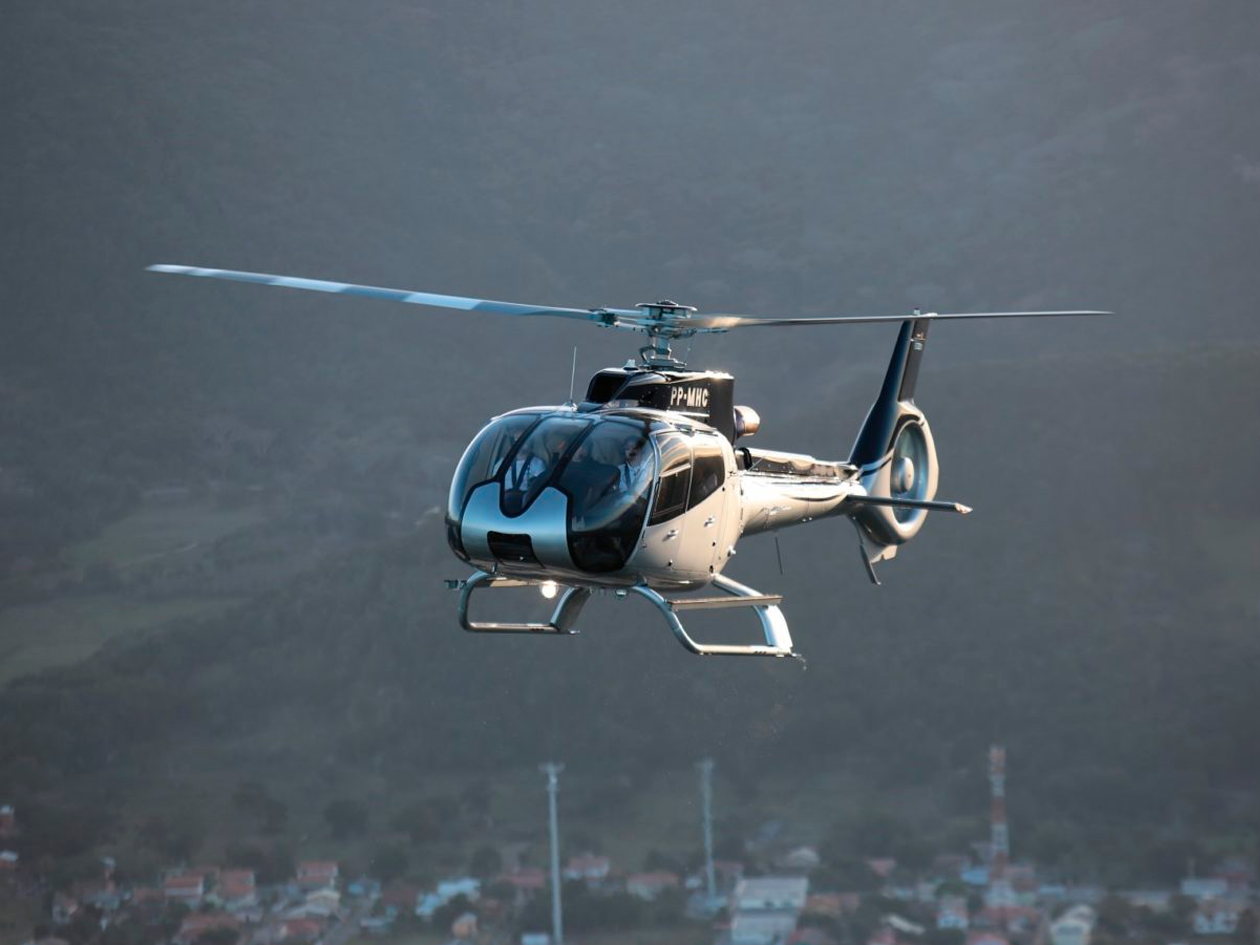The electric backup system (EBS) Airbus Helicopters is studying could bring benefits in safety, payload and noise footprint for single-engine helicopters, said Tomasz Krysinski, the company’s vice president of research and innovation.
AdvertisementThe manufacturer is planning on demonstrating the use of the EBS, which it describes as a “hybrid propulsion system,” on an H130 light single in 2020.
The EBS would be based on a 100 kW motor and 1 kWh lithium-ion batteries. Under a parallel hybrid architecture, the motor will be connected to the main gearbox. The EBS will thus be able to power the rotor for about 30 seconds.
The main improvement from an EBS, as shown in flight on a modified AS350 AStar in 2011, would be seen in case of an engine failure.
The system would not be powerful enough to act as a second engine. But it would make autorotation safer by maintaining the rotor’s rotation speed constant. The pilot would have more time to react. He would not have to push the cyclic stick within a critical couple of seconds.
The EBS would then provide some power at flare, making that final landing phase easier.
The technical demonstration eight years ago was successful. However, due to the weight of the system, which was cutting the payload by an unspecified but significant proportion, no business case could be found.
Key in the current project is the swift progress electric devices have made. This is the case for the motors Thales will supply, at 5 kW/kg (2.3 kW/lb.), Krysinski noted. The batteries Airbus Defence & Space will provide will have better energy density, by a factor of two, than the ones used in 2011.
As a result, the system is expected to weigh 75 kg (165 lb.), said Krysinski.
But the second source of power will be harnessed to increase the certified payload. Thanks to the electric 100 kW, the same flight envelope (defined in altitude and speed) can be used with a greater maximum takeoff weight. In case of engine failure, the EBS will help keep the helicopter in the certified flight envelope.
Its power will enable carrying 150 kg (330 lb.) on top of the existing maximum take-off weight, said Krysinski. This will translate into a 75 kg payload improvement (as the system itself weighs 75 kg).
AdvertisementThe third benefit of the EBS will make a helicopter a better neighbor, according to Krysinski.
Blade tip speed creates the most annoying contribution to the rotorcraft’s external noise. One could imagine slowing down the rotor to cut that noise, when only part of the rotor’s maximum lift is needed. This is not usually done because, in case of an emergency situation, the pilot would need to accelerate back to the rotor’s nominal speed very quickly. This would be incompatible with the inertia of a turbine engine.
On the contrary, the responsiveness of an electric motor will allow reduced rotor speed operations in an urban environment, Krysinski said.
The EBS is now at technology readiness level (TRL) 4, which means it is a research project. Airbus intends, thanks to two to three months of flight testing next year, to reach TRL 6 – the required level to launch the development of a product.




